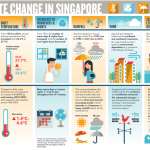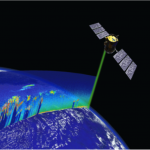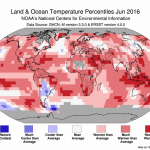
Every year, somewhere between April and September, the Indian monsoon arrives. When exactly the rainy season begins depends not only on geography, but also on other meteorological and climatological factors that can alter the monsoon arrival by nearly two months! Such a drastic year-to-year difference holds a large amount of significance to decisions makers across the country.

When we think about climate change, we hear a lot about the possibility that people could be displaced from their homes by any number of climate impacts, from sea level rise to drought to increased conflict to food insecurity. But what kind of new challenges might come up for people already experiencing homelessness?

The island city-state has the third largest population density in the world.,With so many people in very small space in harm’s way from rising seas and other climate change impacts, the government is seeking to improve its resiliency.

Clouds have a substantial role in stabilizing the surface temperature of Earth and regulating the global hydrological cycle. Aerosols are particulate matter that are suspended in the atmosphere either as a solid or liquid. Aerosols have numerous sources such as a volcanic eruption or burning biomass. When aerosols are released into the atmosphere through a natural or manmade source they influence cloud properties.

Each month in 2016 continues to break global temperature records. As the impacts of climate change become clearer, public health officials, scientists, and policy makers around the world are scrambling to keep up with the impacts of a warming planet. The health hazards associated with changing weather and climate patterns are significant and varied.

During my internship in Wanhua Chemical (America) — a large petrochemical producer with operations across the world — , I have participated in a project focused on chlorobenzene importation.. Chlorobenzene can also be used for the original materials for production. It is also a powerful solvent that can be used for the cleaning.

Renewable energy in the U.S. has been growing rapidly as a source of electricity, but, nonetheless, the U.S. still has a long way to go before it catches up with other developed nations.

I had the privilege of working with educators from Teachers’ College who are very passionate about incorporating technology into climate change education. My internship with the Games Research Lab broadened my perspective and enabled me to see how I can apply the skills and knowledge I have acquired from this program into my job as an educator.

Open up an academic journal, audit any course that has some social science aspect to it. You can even sit in on a corporate meeting and likely hear the term “stakeholder engagement.” In fact, you’d probably think it had become second nature to everyone in the room. But don’t let the ease at which the term is used deceive you. Stakeholder engagement is not an easy task.

Data is such an elemental component of any science, and atmospheric and climate science are certainly not exceptions. Data allows us to test hypotheses, to document the world around us, and quantify observations. Data is what allows us to say the planet is unequivocally warming, or that it rained 1 inch in Central Park last night or that yes, a certain percentage of U.S. voters actually do support Donald Trump.













